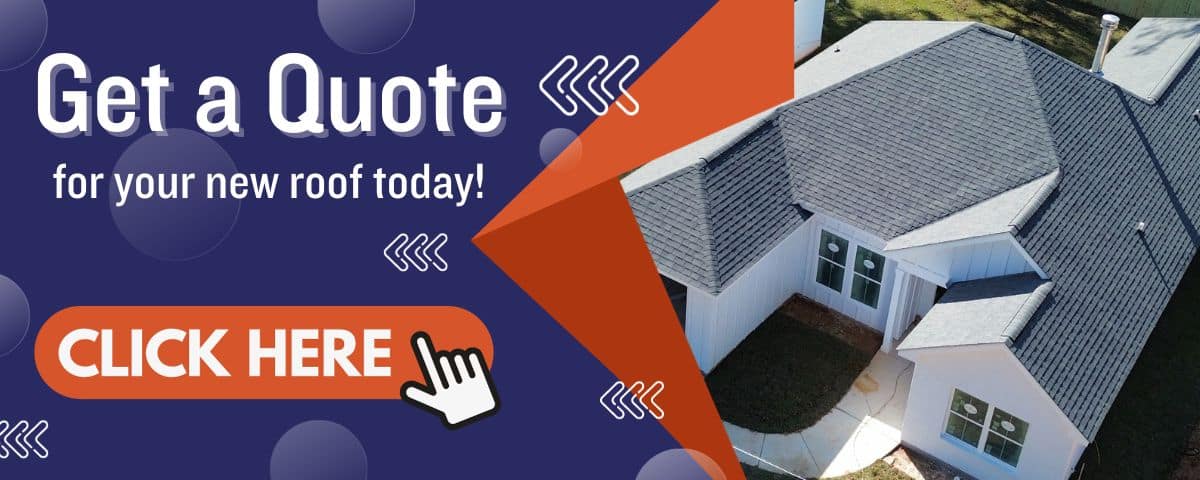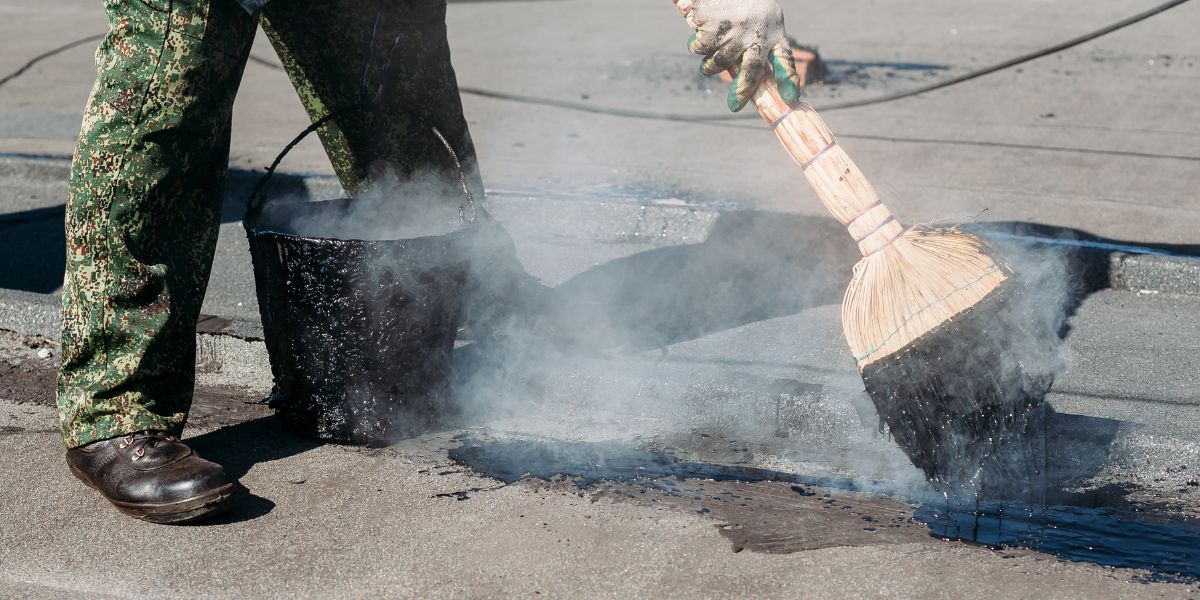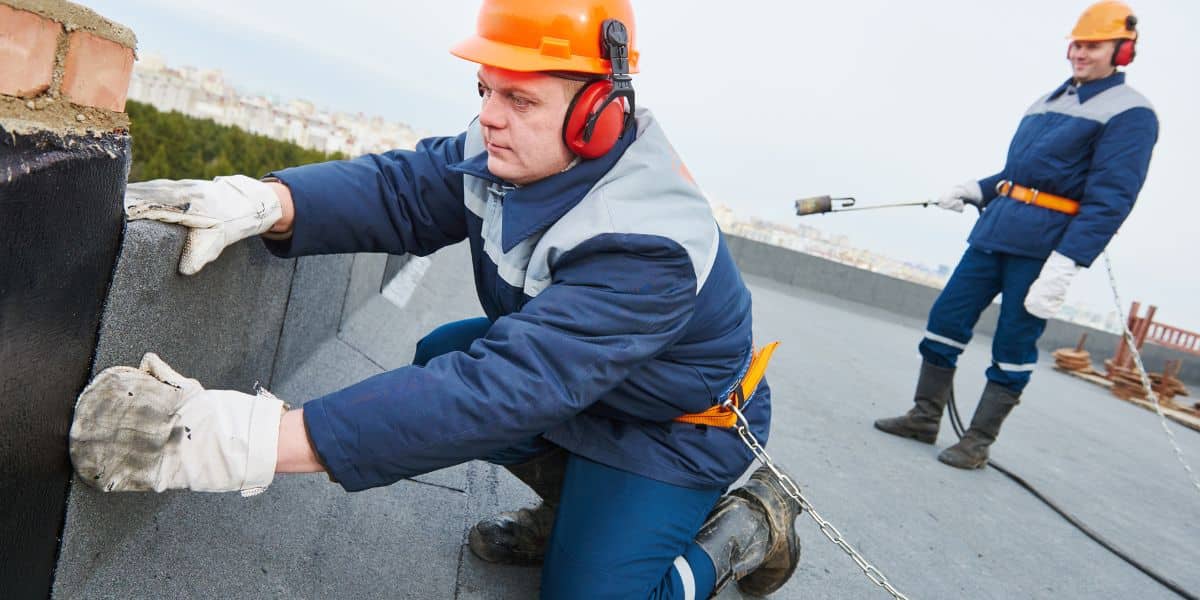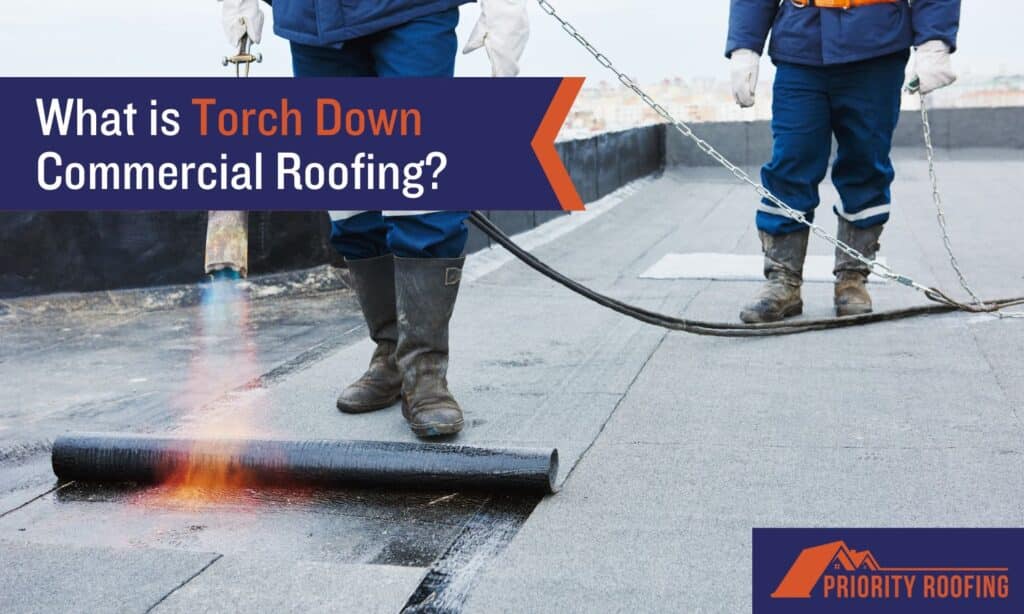Torch-down roofing is also known as “torch-on” roofing because it uses an open flame propane torch. This installation method involves rolling out sheets of modified bitumen onto the roof and using a propane torch to adhere the material to the surface. The layers are heated to the correct temperature and then the seams are melted, creating a waterproof seal.
The membrane layers are composed of bitumen, an asphalt compound that has been modified with rubber or plastic. This type of commercial roofing is characterized by its ability to expand and contract without cracking or melting. The material is highly resistant to both heat and cold. There are two and three layer systems of torch-down roofing.
This article will explain the pros and cons for torch down roofs. This article will also go over the layers and materials that are used in the construction of a torch-down roof.

Torch down roofing material
It is possible that you have heard of a “rubberoid roof” (implying that the material contains rubber), however, this may not be accurate. All torch-down roofing is made of modified bitumen or bitumen with other additives. Asphalt is the main ingredient in bitumen, which is a durable material used for many roofing applications. Modifying or mixing bitumen and polymers is required to manufacture torch-down roofing.
Atactic Polypropylene is the first polymer that is used in this way. It is plastic and not rubber. APP roofing membranes can be heated and cooled and are flexible.
Modified bitumen made from Styrene Butadiene Styrene is another polymer that can be added to modified bitumen. SBS is a rubber-like polymer that makes bitumen more flexible. It also has a lower melting temperature than APP. SBS-modified bitumen roofing membranes are installed with a torch, but can also be self adhered or cold processed.
As a core, a mat made of fiberglass, polyester or another material is commonly used. The manufacturers may also embed small granules into the top of membranes for fire resistance or color options. They can also add UV radiation protection and other unique characteristics.
Types of torch down roofs
Two main types of torch-down roll roofing are available: two-layer and three-layer. The two systems both have a cap and base sheet. However, in the three-layer roofing system, the roofing contractor will first apply a cap sheet and then a smooth base sheet. Finally, he will finish the roof with a granule-coated cap sheet. This extra layer extends the life of your roof, and can improve its fire resistance, energy efficiency or color.
Components of torch down roofing systems
- Insulation is necessary, especially in cold climates. A flat or low slope roof requires insulation in order to retain heat within the structure/building. Insulation is first applied and can be mechanically adhered using screws and plates, or completely adhered by glue or hot mop depending on deck type and the performance level desired by the designer.
- The vapor barrier is next. This underlayment prevents the roof from developing moisture or condensation issues.
- Next, the roofing professional will install an overlay board (or cover board) to support and protect the roofing membrane. It is important to ensure that the overlay board is applied correctly in order to avoid “ponding” which occurs when the roof’s level is off and water collects.
- The base sheet is the first layer. The base sheet of torch-down roofing can be attached to the overlay board either by direct heat fusing or hot mopping.
- Cap sheet: A smooth cap sheet is the top membrane sheet of a torch-down roofing system. The roofing professional will roll out the cap and use a torch on the bottom to warm it up to the top. The two layers form a seal when they are pressed together. The system is now complete in a torch-down roof with two layers. In this case, the third layer of granules will be applied.
- Self-adhesive modified bitumen membranes are used to flash around roof penetrations, such as vents and HVAC (heating and cooling) units. Metal flashing is then used above that. To help the metal adhere, it is primed prior to attaching the base sheet.

Torch down vs hot mopped
The choice for building owners is between a hot mopped or torch-down roof. This type of roofing is also known as Built up Roofing. What is the difference? The name of a hot mopped roofing system comes from the method used to install it. The roofing professionals spread the liquid asphalt on the roof using a mop after laying down the felt and base layers. The asphalt seals the roof, creating a thick waterproof surface.
The lifespan of both types of commercial roofing is similar, although hot mopped systems tend to be less resistant to UV rays and punctures. Hot mopped roofing is usually less expensive to install compared to torch down. Roofers installing hot mop systems may be exposed longer to fumes and should take precautions.
Advantages of torch down roofing
Torch down roofing has many benefits. Torch down roofing is a great way to resist water. If the manufacturer’s application instructions are followed, the flat surface on a torch-down roof will prevent water from collecting.
Torch-down roll roofing can be used in all climates. It expands under heat conditions and contracts under cold temperatures without melting or cracking, unlike other materials. This is what gives torch-down roofs a long life span.
Flat roofs are challenged by climates that experience frequent. This is because the snow remains on the roof until melting. In snowy climates, water-resistant torch-down roofing is a great choice.
Cap sheets on torch-down roofing systems have other great properties. They are resistant to UV rays and reflectivity, which keeps the building cool.
It’s relatively easy to repair a torch-down roofing system. Patches modified-bitumen membrane can be applied to the rips, gaps, or broken seams. A torch is used to repair the damage, just as it was for installation.

Disadvantages of torch down roofing
Some roofers prefer alternatives to torch-down roofing because of the difficulty and danger involved in installing them. The roofing torch is a torch that uses an open flame and operates at high temperatures. This can cause a fire or burn the roofing professional. Safety training has significantly reduced the number of accidents. You should make sure that your roofing professional has received the Certified Roofing Torch Application (CERTA) safety training offered by the National Roofing Contractors Association.
A torch-down membrane system is relatively inexpensive, but a roofer may charge more for the installation due to additional training, insurance, and equipment costs. The membranes can only be up to one meter wide, which means that the roofing professionals will have to join multiple seams. This width has another advantage as it makes the rolls easier to transport in restricted areas where larger systems are not allowed.
Other installation mistakes and seam failures can also be a problem with torch-down roofing. Leaks can occur if the layers of a torch down roofing system have not been properly sealed. Three-layer systems are less likely to have these problems, and repairs can be made easily if they do.
Water can also get trapped in between the two layers during installation or repair. It is therefore strongly recommended to install torch-down roofing systems in dry conditions.
What are the best roof situations for torch down Roofing?
The best torch-down roofing system for roofs with a slight pitch is between 1/4:12 and 1:12. This will give you a roof that is durable, long-lasting, and can withstand the elements. Torch-on roofing systems are not recommended for roofs that are completely flat.
Priority Roofing is committed to educating people about roofing. Call us today to find out about other roofs for commercial buildings.

FAQs
Q: What other name is there for torch-down roofing?
A: Torch-down roofing is also known as “torch-on” roofing. The roof is sometimes called a “rubberoid”.
Q: Does torch down roofing work?
Torch-down roofing is a good option for all types of climates. It can withstand heavy snowfall and extreme heat. Torch down roofing works best on roofs with a slight pitch. Torch down roofing is easy to fix, since it only takes a few patches of modified bitumen torched into the gaps.
Q: How long does a roof that has been torched last?
Torch-down roofing is durable, just like hot mopped roofs, because it can expand and contract in all climates without melting or cracking. It is also water resistant.
Q: How much does it cost to torch down a roof?
A: Torch-down roofing is typically less expensive than other options. In addition, the maintenance is easy and repairs are few, which reduces the overall cost. Please contact one of our qualified installers in your area for more information.
Q: What are the best materials for torch-down roofing?
All torch-down roofing is made of modified bitumen. Modified bitumen is bitumen that has been mixed with polymers. Atactic Polypropylene and Styrene Butadiene Styrene modified bitumen are two polymers. SBS modified bitumen is more flexible, but has a lower melt point. It can also be applied by torch.
Q: Is it possible to torch down a roof in the winter?
A: Yes. You can apply a torch-down roof in winter. However, you should follow the instructions for cold weather installation.

